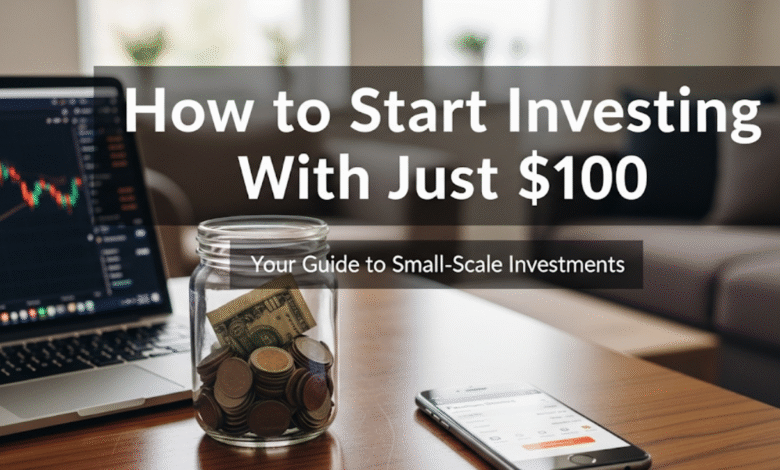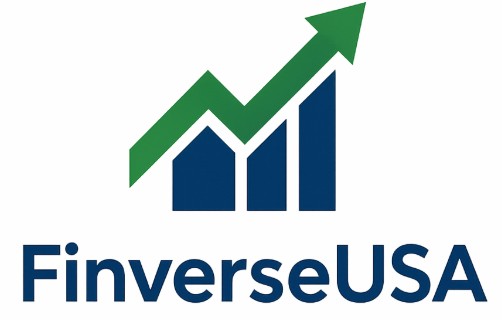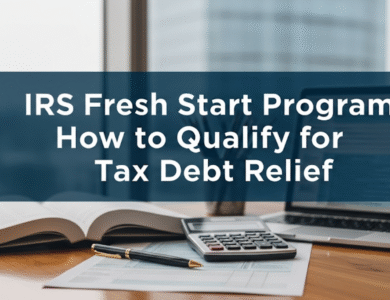
You don’t need thousands of dollars or a degree in finance to get started on your investment journey. You only need $100 to start growing your wealth and your financial future is accounted for. While lots of people think that investing is just for the well-to-do, the truth is today’s investment platforms and opportunities are for everyone, not just high net-worth individuals.
In this complete guide, I will teach you how to get started with investing of $100 and take you through the best investments for beginners, as well as actionable steps to make your money grow. If you’re a college student, young professional, or just considering investing for the first time — this article will empower you with the knowledge and confidence needed to start your journey of building financial stability and growing wealth.
Why $100 Is Enough to Start Your Investment Journey
Myth Busters: High Minimums Thwarted
The days of having to have $1,000 or more to start investing are gone. There’s been a democratization of the investing world thanks to modern technology and fractional share investing. With $100, you can:
- Buy as little as a sliver of pricey shares such as Apple or Amazon
- Get your portfolio started with ETFs
- Dollar-cost average your way into index funds
- Consider a robo-advisor without the high initial deposit requirement
The Power of Starting Small
Starting with $100 will also teach you some vital lessons without any inordinate risk. You will discover market volatility, the need for research and how various investments perform. Even more importantly, you will build the habit of investing regularly, which is more important than how much you start with.
Best Investments for Your First $100
Exchange-Traded Funds (ETFs): Maximum Diversification
For small money and newcomers, ETFs are tailor made. They provide immediate diversification into hundreds or thousands of stocks for the price of just one.
Top ETF Options for Beginners:
- SPDR S&P 500 ETF (SPY): Follows the S&P 500 index
- Vanguard Total Stock Market ETF (VTI): Represents the total U.S. stock market
- iShares Core MSCI Total International Stock ETF (IXUS): This ETF holds more than 3,000 stocks from outside the U.S.
Pros:
- Expense ratios which are small (usually 0.03% – 0.20%)
- Instant diversification
- Lower risk than individual stocks
- Easy to buy and sell
Cons:
- Limited control over individual holdings
- Market risk still applies
Fractional Shares: Access to Expensive Stocks
What they are: Pieces of an individual stock, which cost more than $1 each.
You can buy these shares in fractional amounts, which are fractions of high prices titles. Instead of having to pony up $3,000-plus for one Amazon share, you can put up $25 and own a sliver.
Benefits of Fractional Investing:
- Access to expensive stocks
- Better portfolio diversification
- Invest exact dollar amounts
- Don’t wait for share prices to stack up
Robo-Advisors: Professional Management Made Simple
Robo-advisors invest your money automatically, using algorithms. They’re ideal for hands-off investors who prefer professional management without steep fees.
Popular Robo-Advisors for Small Amounts:
| Platform | Minimum Investment | Annual Fee | Features |
|---|---|---|---|
| Betterment | $0 | 0.25% | Tax-loss harvesting, goal-based investing |
| Wealthfront | $500 | 0.25% | Advanced tax optimization, planning tools |
| Schwab Intelligent Portfolios | $5,000 | 0% | No advisory fees, full-service offering |
| Acorns | $0 | $1-5/month | Round-up investing, educational content |
Target-Date Funds: Set-and-Forget Investing
Target-date funds automatically adapt their asset allocation as you get closer to your target retirement date. They are aggressive when you’re young and they become conservative as you near retirement.
Key Benefits:
- Automatic rebalancing
- Age-appropriate risk adjustment
- Professional management
- Single fund diversification
Investing Your First $100: Step by Step
Step 1: Choose Your Investment Platform
Picking the correct brokerage is key to success. Look for platforms offering:
- Commission-free trades
- Low account minimums
- Fractional share investing
- Educational resources
- User-friendly mobile apps
Top Platforms for Beginners:
- Fidelity: $0 minimums, impressive research tools
- Charles Schwab: Full platform, good customer service
- E*TRADE: Easy-to-use interface, extensive educational resources
- Robinhood: Easy-to-use, mobile-first platform, commission free trades
Step 2: Create Your Investment Account
Required Information:
- Social Security number
- Government-issued ID
- Bank account information
- Employment information
- Investment experience level
Types of Accounts to Consider:
- Taxable Brokerage Account: Complete freedom (no contribution limits)
- Roth IRA: Don’t pay tax on growth, limits on what you can contribute
- Traditional IRA: Tax-deferred growth, required minimum distributions
Step 3: Decide How You Will Invest
Conservative Approach (Lower Risk):
- 60% Bond ETFs
- 40% Stock ETFs
- Expected annual return: 4-6%
Moderate Approach (Balanced Risk):
- 60% Stock ETFs
- 40% Bond ETFs
- Expected annual return: 6-8%
Aggressive Approach (Higher Risk):
- 80% Stock ETFs
- 20% International ETFs
- Expected annual return: 8-10%
Step 4: Invest Your First Dollar
Sample $100 Portfolio Allocation:
| Investment Type | Amount | % |
|---|---|---|
| U.S. Large Cap ETF | $40 | 40% |
| U.S. Small Cap ETF | $20 | 20% |
| International ETF | $20 | 20% |
| Bond ETF | $20 | 20% |
Step 5: Automate Your Investments
Consistency beats timing. Establish an automatic contribution of $25-50 a month to grow it gradually through dollar-cost averaging.
Small Beginnings: Don’t Fall into These Traps
Trying to Time the Market
Trying to time markets is next to impossible, even for the pros. Rather than bide your time until the “perfect” time, begin investing with some regularity, no matter what the market does.
Concentrating All Funds in a Single Trade
Diversification reduces risk. Don’t go “all in” on a single stock or a single sector for your $100.
Ignoring Fees and Expenses
Large fees can quickly eat away small investments. Just be sure to examine expense ratios and trading fees ahead of investing.
Emotional Decision Making
Market volatility is normal. Don’t get caught up in short-term market moves that may cause you to act on emotion.
Not Having an Emergency Fund
Make sure you have a small emergency fund for any curveballs life throws before investing.
Growing Your Investment Beyond $100 Over Time
The Magic of Compound Interest
Over time your $100 will increase greatly, thanks to compound interest. This is how varying amounts and time frames translate to growth:
$100 First deposit + $50 Monthly investments:
| Time Period | 6% Annual Return | 8% Annual Return | 10% Annual Return |
|---|---|---|---|
| 5 years | $3,600 | $3,900 | $4,200 |
| 10 years | $8,300 | $9,500 | $11,000 |
| 20 years | $23,200 | $29,400 | $38,300 |
| 30 years | $50,400 | $68,900 | $98,800 |
Strategies to Accelerate Growth
Increase Contributions Regularly:
- Increase monthly investments with salary hikes
- Invest tax refunds and bonuses
- Adopt the “pay yourself first” credo
Reinvest Dividends:
- Enable automatic dividend reinvestment
- Purchase more fractional shares with dividends
- Compound your returns faster
Take Advantage of Employer Matching:
- Contribute to 401(k), if company matches
- Free money accelerates wealth building
- Consider this before taxable investing
Tax Considerations for Small Investors
Tax-Advantaged Accounts
Roth IRA Benefits:
- Tax-free growth and tax-free withdrawals in retirement
- No required minimum distributions
- Contributions can be withdrawn penalty-free
Traditional IRA Benefits:
- Tax deduction for contributions
- Tax-deferred growth
- Lower current tax bill

Taxable Account Considerations
- Capital gains taxes due on profitable sales
- Dividend income taxation
- Tax-loss harvesting opportunities
When to Increase Your Investment Amount
Signs You’re Ready to Step Up Your Investments
- Comfortable with current investment performance
- Built an adequate emergency fund
- Increased income or reduced expenses
- Better understanding of investment principles
Scaling Your Investment Strategy
From $100 to $1,000:
- Add more asset classes
- Consider individual stocks
- Explore sector-specific ETFs
From $1,000 to $10,000:
- Implement tax-loss harvesting
- Include real estate investment trusts (REITs)
- Consider international diversification
Building Long-Term Wealth Habits
Automate Your Success
Automate transfers from your checking account to your investment account. This takes away the temptation of spending instead of investing.
Stay Educated
Continue learning about investing through:
- Financial news websites and apps
- Investment podcasts and YouTube channels
- Books on personal finance and investment
- Online courses and webinars
Track Your Progress
Check up on your investments, but don’t become obsessed with them day to day. Monthly or quarterly reviews are fine for long-term investors.
Frequently Asked Questions
Is $100 really enough to get started investing?
Yes, $100 is a good enough amount to start investing. Several brokerages have done away with minimum investment requirements, and it’s possible to buy pieces of pricey stocks thanks to “fractional shares.” The secret is to start early, and to invest regularly.
What is the best investment for a total beginner with $100?
A broad market ETF (like VTI / Vanguard Total Stock Market ETF or SPY / SPDR S&P 500 ETF) works well for beginners. These offer immediate diversification among hundreds of companies for minimal fees.
Should I invest $100 or pay off debt?
As a general rule, pay off high-interest debt (especially credit card debt, personal loans) before you start investing. If you have debt with relatively low interest rates (4-5% or less), you may consider investing your money instead.
How often should I review my $100 investment?
Review your investments monthly or quarterly, not daily. To check it every day just leads to irrational decision making based on the short-term movements of markets.
Is it possible to lose all my money if I invest $100?
And while all investments are risky, diversified ones like ETFs are unlikely to lose all their value. Diversification is the name of the game for beginners, and individual stocks mean too much risk.
What fees should I expect when investing $100?
Seek out commission-free brokerages to dodge trading fees. Exchange-traded funds, or ETFs, usually have expense ratios ranging from 0.03% to 0.75% a year. Anything over about 1% is an expensive fund indeed.
How long should I stay invested with my $100?
The longer you invest for (5+ years ideal), the better. The stock market is volatile in the short term, but its historical trend is upward over decades. Just invest money you won’t need for years.
Is a robo-advisor right for me or should I choose my own investments?
Robo-advisors are a fantastic option for beginners who would like professional management without the research. If you like the idea of learning about investing and want more control, self-directed investing might be a better match.
Final Word: Your $100 Investment Opportunity Starts Today
You can not only start investing with $100, but doing so is smart. You’re establishing important financial habits, getting educated about markets, and initiating the wealth-building journey that can set you up for financial success in the future.
Keep in mind every great investor had to start somewhere. Warren Buffett made his first stock purchase when he was 11 years old: He paid $38 per share for Cities Service. It’s not how much you begin with that matters, it’s that you begin. The $100 you start with today, along with time, plus regular contributions, can turn into substantial wealth.
The investing landscape has never been friendlier to the little guy. Use commission-free trades and fractional shares and low-cost ETFs to build a diversified portfolio. Stick with consistency, acquire knowledge and let the magic of compound interest do its job over the years.
That first $100 investment is the beginning of your financial future. The best time to begin was yesterday; the next best is today. Open that brokerage account, make your first investment, and start growing the assets that will secure you financially and free you for years to come.

